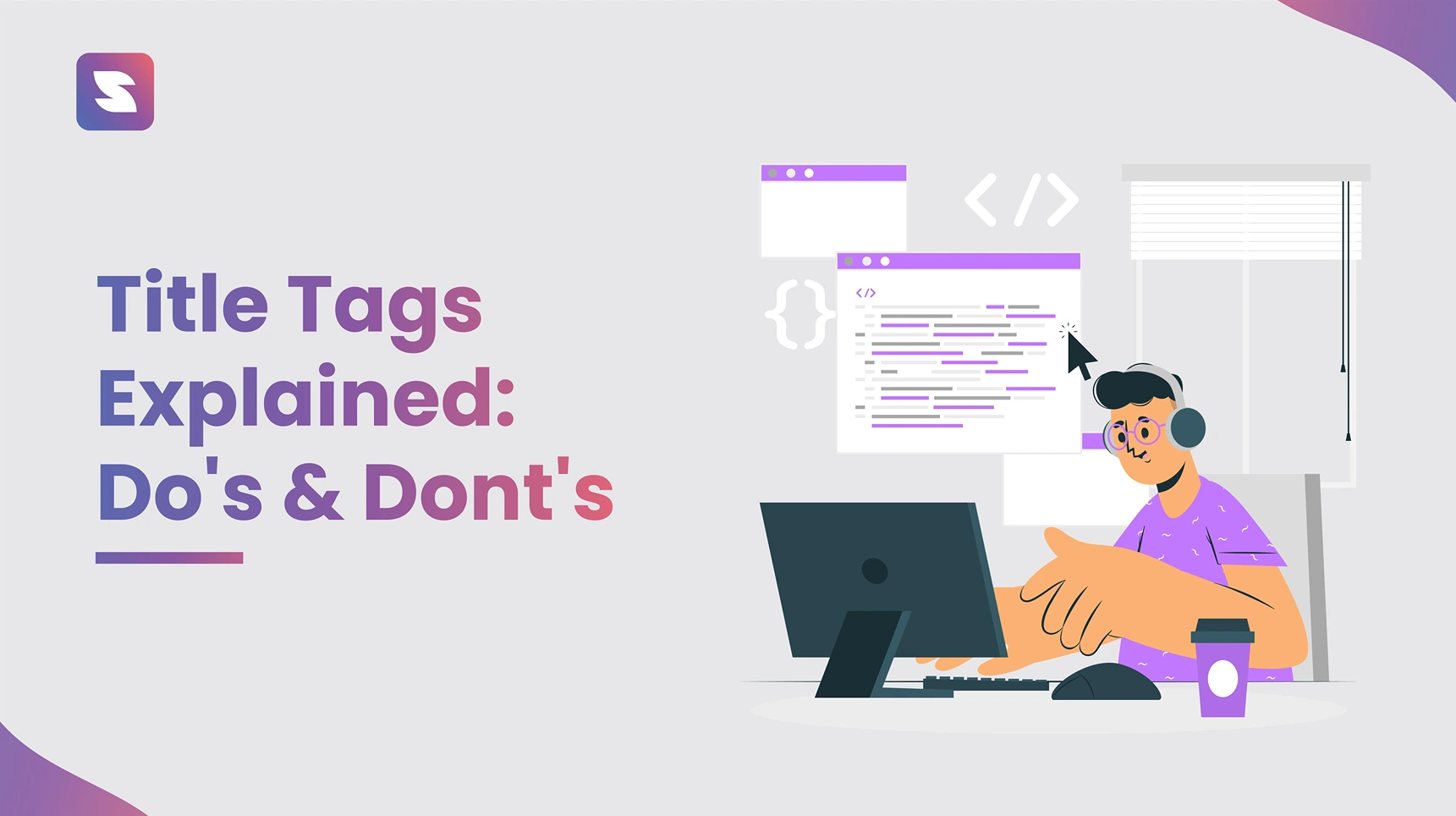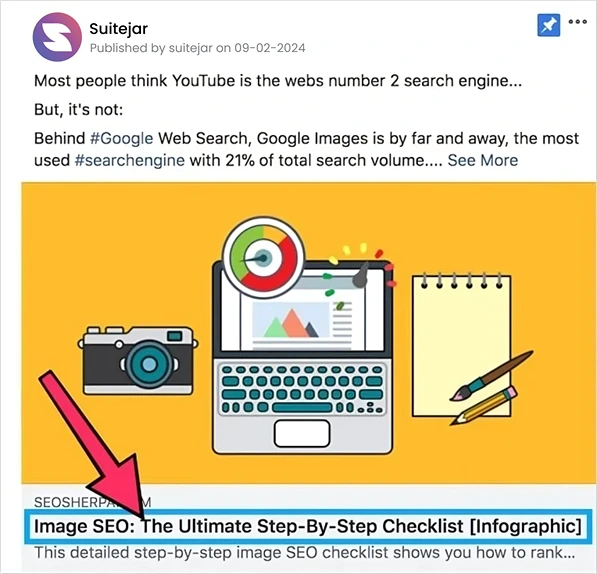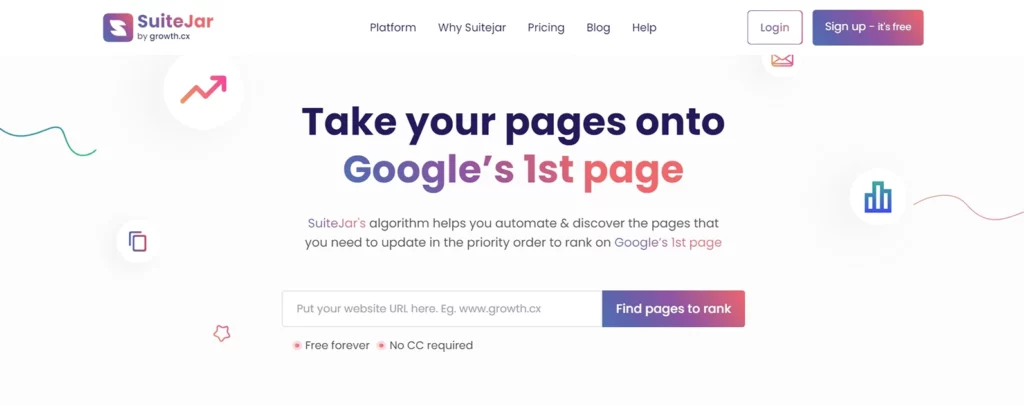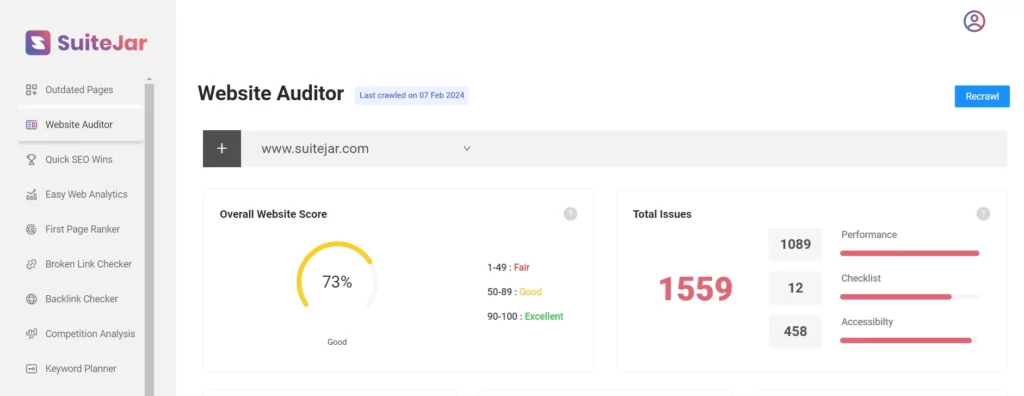Rank on Google's first page in 3 months
The Do’s and Don’ts of Writing Title Tags for SEO
Feb 09, 2024 | Athira K
The title tag of your business website plays an essential role in how your audience interacts with it in Google search results. Therefore, optimizing title tags for SEO should be the top priority in your on-page SEO strategies.
Unfortunately, many people make mistakes when creating title tags, significantly impacting their SEO performance.
In this blog, we will know the dos and don’ts of title tags in SEO, providing insights to help you improve your website’s search engine visibility and user experience.
What Is A Title Tag?
A title tag is called an HTML element that provides a webpage title for search engines and internet browsers. The title will appear in the page’s search engine results and link previews.
It’s the first thing your audience sees on search engines like Google when discovering your brand. If you have a clear, concise title, you will satisfy both people and search engines.
This is how it displays in a browser tab.

This is a title tag in HTML.

This is how it looks like in Google search results.

And here is how it looks like on social media.

Creating the perfect title tag for SEO is essential for getting attention from your targeted audience and search engines. And you have to learn how to craft the ideal title tag for SEO.
Here, we can discuss the dos and don’ts of title tags.
The Do’s of Writing Title Tags
Here are the do’s (or SEO title tag best practices) when it comes to writing title tags for better SEO.
1. Use Relevant Keywords
Include targeted types of keywords in your title tag. Including this information will help search engines better comprehend the content of your webpage. Choose 1-2 targeted keywords related to your content and incorporate them naturally into your title.
When creating your title tag, it’s essential to put your target keyword first. That helps prevent your keyword from being cut off, and your user will see the keyword first.
2. SEO Title Tag Length
Title tags longer than 55 – 60 characters may get cut in search engine results. That makes it harder for users to see the full title. Keeping your webpage title under 55 characters ensures that it effectively communicates the topic of your webpage.
If your title tag exceeds a lengthy one, Google may truncate it. That leads to potential frustration among your audience and reduces click-through rates.
Like this:

Also, short title tags may need to be more accurate to convey your page’s content accurately, which may diminish its effectiveness.
To maintain an optimal balance, it is advisable to ensure that your title tags are of an appropriate length. Utilizing tools such as Moz’s title tag checker can assist in determining whether your title tags are within the desired parameters.
Here are some tips:
- Don’t create your title in all caps. This takes extra space and might lead to the title cutting off. People often have difficulty reading these titles.
- You can use symbols to save space (“&” instead of “and”)
- Consider using colons (“:”) or pipes (“|”) as separators rather than hyphens or dashes.
3. Make It Unique
Each webpage on your website should have a title tag that is concise, unique, and describes its content. This helps search engines differentiate between your pages and prevents them from being seen as duplicate content.
You can use the ABC formula (Adjective – Benefit – Confidence Booster) to make your title more clickable.

You can evaluate the current rankings webpages and take ideas from there. So you will get an idea of what the audience is searching for.
4. Use Branding
Including your brand name in the title tag helps brand recognition and provides context for users when they see your webpage in search results. It can also help with click-through rates if users are familiar with your brand.
Always make sure to be aware of how your results appear in SERPs. Sometimes, Google decides what to display, such as appending brand names to display titles.
5. Use Proper Grammar And Punctuation
Title tags should be well-written and error-free. This helps with readability and reflects positively on your website’s overall quality.
- Ensures clarity and readability, making your title instantly understandable.
- Error-free title tags reflect positively on your website’s credibility and quality.
- Eliminate errors to enhance professionalism.
- Use punctuation to separate title elements.
- Apply uniform grammar and punctuation rules across all titles.
- Well-crafted titles can improve click-through rates.
- Your title tag mirrors your website’s dedication to quality, influencing user engagement.
The Don’t of Writing Title Tags
Here are some common mistakes to avoid when crafting title tags for SEO.
1. Keyword Stuffing
While using keywords in your title tag is essential, do just what is necessary. Stuffing too many keywords into the tag can make it look spammy and negatively affect your search engine rankings. Keyword stuffing will negatively affect your ranking. Users will not click the title that makes them spammy.
This is a bad example of keyword stuffing:

You can optimize the title like this:

2. Using All Caps
Writing a title tag in all capital letters can come out as shouting and may turn off users. Stick to proper capitalization for a more professional appearance.
For example, “Ultimate Guide to SEO” is more approachable than “ULTIMATE GUIDE TO SEO.”
Here are some tips for you:
- Capitalize Major Words: Capitalize the first letter of each significant word in your title to improve readability. Prepositions, conjunctions, and articles are typically left in lowercase unless they start the title.
- Use Sentence Case: Consider using sentence case in your title, where only the first word and proper nouns are capitalized. For example, “Increasing your site’s traffic: A beginner’s guide.”
- Avoid Overcapitalization: Reserve capital letters and proper nouns for the beginning of sentences to avoid the appearance of shouting.
3. Repeating Title Tags
Each page on your website should have a unique title tag, so avoid using the same one for multiple pages. It will lead to duplicate content problems and confusing search engines. Remember these points when creating title tags without repetition:
- Reflect Page Content
- Use Structured Variations
- Incorporate Long-Tail Keywords
- Leverage Branding When Appropriate
Poor Practice: Using the “Ultimate SEO Guide” for multiple articles on SEO strategies, tips, and updates.
Optimized Approach:
- For an introductory guide: “Beginner’s SEO Guide: Mastering the Basics.”
- For advanced strategies: “Advanced SEO Techniques for 2024: Beyond the Basics”
- For updates: “SEO Updates 2024: What’s New in Search Engine Optimization”
4. Being Vague
Your title tag should accurately describe the content of your webpage. Avoid using generic or vague titles that don’t provide any information about the page’s topic.
Examples of Vague vs. Specific Title Tags:


These examples show how specificity can transform a title from uninformative to a precise page content message.
5. Keywords At The Back, Brand Name In Front
Most people often use brand names at the front of the title and keep the keywords at the back.
This approach may only be optimal for some websites, especially those working to build their brand presence or those in highly competitive niches where specific keywords drive traffic.
You can analyze your audience and understand why they are more likely to search for your brand or specific services. You can use this insight to create your title tag with brands or keywords. Craft your title tags to include the brand name and keywords in a way that reads naturally and appeals to search engines and users.


6. The Title Tag Is The Same As The Headline <H1> Tag
This mistake is expected; that is, using the title tag is the same as the H1 tag. So, always vary the keyword phrasing of your title tag to be different from the headline.
Using the exact text for both the title tag and the H1 tag is a missed opportunity for optimization. While it might seem efficient or consistent, this practice can limit your ability to target a broader range of keywords and phrases.
You can incorporate different, related keyword phrases in your title tag and H1 tag to cover all search queries. Also, use synonyms or different variants of your primary keyword.
Example: If your page is about “Organic Gardening Tips for Beginners,” you might use:
- Title Tag: “Beginner’s Guide to Organic Gardening – Tips and Tricks”
- H1 Tag: “Mastering Organic Gardening: A Starter Guide”
This differentiation allows you to capture a broader audience by targeting slightly different search terms and intents. It helps in enhancing the page’s SEO performance and the user’s navigational experience.
7. You Need To Optimize For Local Search
Your title tags must tell the search engines where your target audience is. This can increase the chance of appearance in the first position.
Strategies for Local Optimization in Title Tags:
- Incorporate Location Keywords: Include the city, region, or neighborhood names in your title tags. For example, “Coffee Shop in Banglore – Bean Roasters.”
- Use Geo-Specific Phrases: Beyond just names, consider phrases that locals might use to search for your type of business or content. For instance, “Best Pizza Delivery in Chennai – Fast & Fresh.”
- Balance with Broader Keywords: While focusing on local terms, include broader industry keywords to maintain relevance and context.
Suggested Read: Best Local SEO Tools in 2024
Use An On-page SEO Tool
Using an on-page SEO tool is crucial for refining your title tag strategy. It provides a comprehensive analysis of your web pages to identify strengths and areas for improvement in SEO.
Try SuiteJar, an advanced SEO toolkit designed for in-depth on-page analysis. It provides an intuitive interface for conducting keyword research and website auditing, with various features available.

The website auditor feature in SuiteJar offers a complete assessment of your website’s SEO health, ensuring compliance with Google’s standards. It highlights issues such as potential errors or duplicate content, facilitating precise optimizations to improve your site’s SEO performance.

It lets you get insights for optimizing your title tags, helping your website meet search engine expectations.

Conclusion
In conclusion, always remember these dos and don’ts when creating title tags for SEO.
By placing your primary keyword at the forefront, varying your keyword phrasing, optimizing for local searches and using clear language without abbreviations. You can significantly boost your page’s visibility and click-through rate.
Remember, a well-crafted title tag is a gateway to your website’s content, so make it count!
